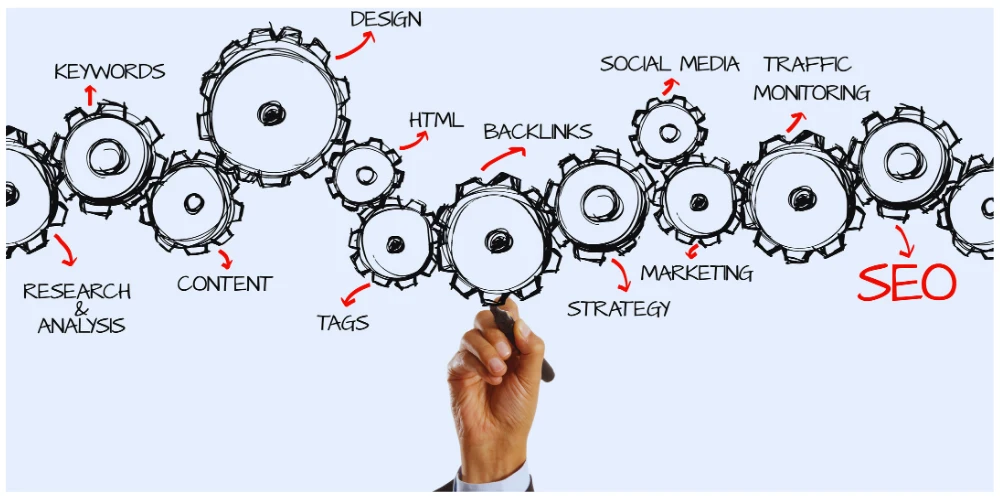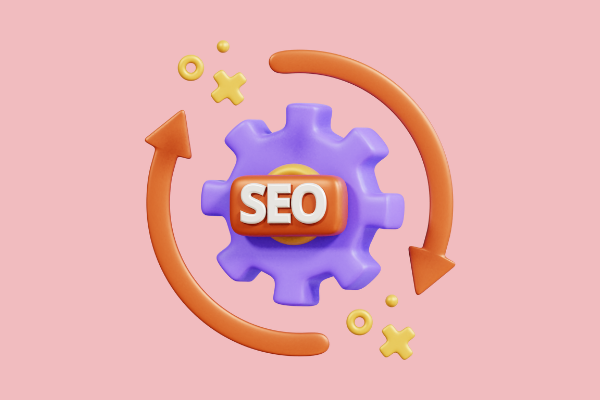Last Updated on 2 years ago by Gülenber Han
When used properly, pagination is a very useful tool for SEO. Your website grows over time and content is also diversified. A certain order of prepared content is required for both user experience and SEO. Pagination is an ideal option for the correct sorting of long content, but when done wrong, pagination can create a disadvantage for SEO. For this reason, pagination should be used for SEO, paying attention to some details. Pagination is ideal for long content and e-commerce websites. In this way, the contents are divided into certain pages and presented to the users. At this stage, it is important how search engines scan pages, and this needs to be taken to line up correctly in SERPs. Many SEO agencies pay attention to these details and create a pagination strategy. In this way, pagination is used to attract potential customers and increase user satisfaction by ceasing to be a disadvantage for SEO.
What is Pagination SEO?

Pagination is a useful tool for SEO and is the long content on a website divided into pages through a web design technique. It is much easier for users to browse that content and read the content when long content is divided into pages. The pagination SEO technique is highly functional for long articles, blog content, forum topics, or listed products on the website. With this technique, content divided into several pages is more easily digested by users. Each page is numbered and the user knows the page to follow. The most common example of this technique is the Google SERP page.
Pagination vs. Load More vs. Infinite Scroll
Lead more and infinite scroll are two preferred approaches instead of pagination. In the lead more approach, a certain part of the content is shown to the user and there is a link below the text such as “lead more”. When the user clicks on this link, the continuation and a longer version of the text are shown to the user. This approach can be used for any website. For example, when you enter a product’s website, it first shows certain products and directs customers with a button such as “load more products”. This approach is very useful because if the short text or product group shown first does not attract the user’s attention, the user can quickly cross that page and have a better user experience. Although a particular text or product appears on the screen, the excess is loaded and opposite the user as you scroll down. All the user has to do to view more is to scroll down. One of the biggest examples of this is Instagram. Just scroll down to see more posts while browsing the home page. These approaches are the opposite of what they want to achieve for pagination SEO. Although visually ambitious, Googlebot cannot understand scrolling behavior and view more. Since not all content is understood by search engines like Google, the probability of going to the top in SERPs is quite reduced.
Is Pagination Good for SEO?
Pagination is a very important method for the SEO strategy. It is not possible to use the advantages of SEO technically with approaches such as load more or infinite scroll. The paging technique makes this possible. Long but useful articles for SEO can be added to the website by dividing them into pages. It allows users to browse faster within the website and easily find what they are looking for. Also, when pagination SEO is done, Googlebot can understand the content and show your content accordingly in SERPs. This is not possible in options such as lead more and infinite scroll. Despite these benefits of Pagination SEO, it may have some difficulties. For example, if each web page receives a different URL, the content can be difficult to index.
How Google Historically Handled Pagination?
Google used rel=prev and rel=next link elements to better understand the content made when used for pagination SEO. These two links made it easy for Google to understand what content is pagination. These link tags have been used by adding them to the code of the relevant web page. Although this system has been used since 2011’, Google currently uses a different method to understand pagination SEO.
How Google Handles Pagination Now?
Although Google has used rel=prev and rel=next tags in the past, this system has changed today. Creates a situation where the content devoted to the pages is treated like normal content in the new system. That is, every page in pagination SEO is eliminated by Google as if they were different and separate web pages. In paginated content, rel=prev and rel=next link tags can still be encoded on pages. This does not create any disadvantages for SEO.
Pagination SEO Best Practices
There are some ideal methods to make pagination SEO. These methods are listed as follows.
1. Make Sure Your Anchor Links are Crawlable
Search engines need to fully access the content to understand your content as it is and to be able to stand by the relevant users. To do this, you need to add a pull-out link to the relevant web pages. When these links are not placed, search engines like Google will lag back in understanding and scanning your content and cannot index it. For this reason, pagination SEO fails.
2. Use Self-Referencing Canonical URLs for Each Page
Google and similar search engines can detect your paginated content as duplicate content. To avoid this, you need to use canonical labels when doing pagination SEO. Canonical labels refer to it, as a sign that the content is not repeated. Such labels support intermediate motors to scan your content correctly, and this can also be seen in SERPs.
3. Do Not Include Paginated Pages in Sitemaps
There are some measures that can be taken to prevent Google from choosing a random page when ranking in SERPs. One of them is not to include paginated pages in sitemaps. In this way, the search engine cannot scan and index these pages.
4. Avoid Using a View All Page If You Decide to Paginate
There are many important points when paging, one of which is to avoid the display of all options for SEO to succeed. All long content is displayed on a single page. Although it seems quite ideal from the outside, it creates a disadvantage for SEO. Since the content is too long, the page loading time is longer, which can affect the ranking. In addition, the pagination method is ideal to offer a better user experience. Information pollution can occur when all content is displayed on one page, and users may have trouble finding what they are looking for. Also, those who view the web page on mobile may not be satisfied with this situation.
5. Use URLs Properly
When doing pagination SEO, a unique URL is created for each web page. Generated URLs should be used correctly for a successful pagination SEO. Creating both user-friendly and meaningful is one of the best methods that users can understand. In paginated content, it is wrong to mark only the first page as a standard page. Instead of this, it is more accurate to use a standard URL for each page. In addition, it is recommended to take care of page transitions and the correct loading of content.












